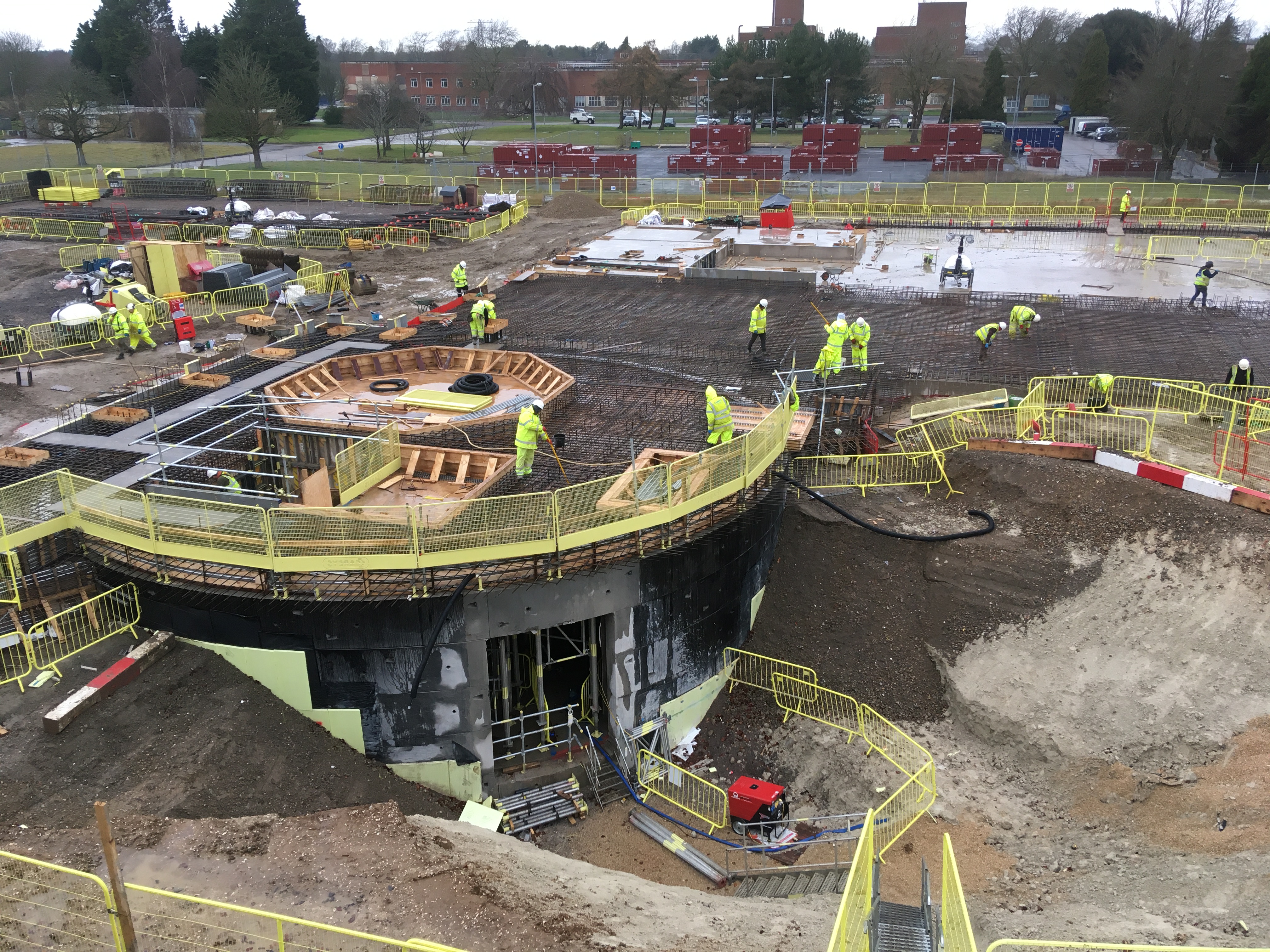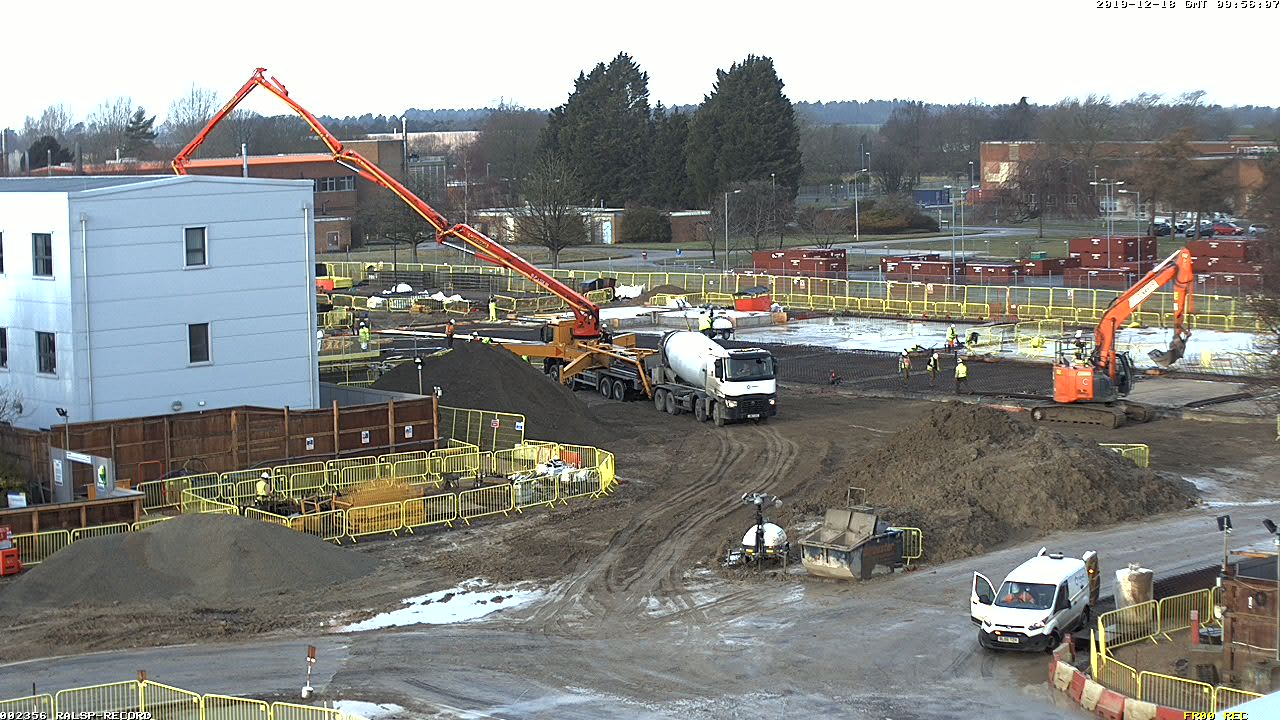Constructing the building which will house the UK's largest space test chamber, vibration facility and electromagnetic compatibility (EMC) chamber in an ISO controlled environment is a complex task. The very structure and fabric of the National Satellite Test Facility (NSTF), as well as the specialist equipment within it, have been designed to enable UK businesses to build bigger, more technologically-advanced satellites and test them in a single location.
While the work which has taken place this year will soon be completely hidden below ground level, it will play a very important role in the ultimate functioning of the NSTF.

Since work started in February, an innovative clean earth mesh has been laid under the rainwater attenuation tank which is the same size as an Olympic swimming pool. Normally, metal spikes are bored into the ground to protect the EMC chamber from electromagnetic interference. However, due to the unique local geology of the Harwell Campus, this wouldn't have been effective. Instead, a copper mesh has been used to dissipate electromagnetic current and ensure the perfect electrically clean environment necessary for satellite testing.
Once the rainwater drainage system was completed, a 9m deep by 25 m diameter crater was excavated for the basement level vibration chamber. To construct the actual basement the team used a system of pre-stressed concrete rings, a quicker, cheaper and stronger method originally developed for the Crossrail project for the London Underground. The crater has been back-filled with earth around the basement and will be ready for the seismic blocks to be dropped into place in the first quarter of the New Year.
The vibration equipment will be housed below ground so that satellites can remain at the same level as they move between each of the NSTFs test rooms. Two seismic blocks one of 200 tonnes the other of 300 tonnes will isolate the vibration equipment from the rest of the building, ensuring that the sensitive measurements taking place in the rest of the building aren't affected as the spacecraft and test adaptors are subjected to forces of up to 222 kN.
The shakers and amplifiers for the two vibration systems have been manufactured and tested and are ready to be shipped and installed. The expert Dynamics Group at RAL Space are already working with the existing vibration equipment to develop a procedure to control whole spacecraft level testing, ready to commission the new shakers in 2021.

Other elements of the all-important equipment for the NSTF are also well underway. The pyro-shock equipment has already been delivered and commissioned and is currently ready for equipment level testing up to 50 kg in the existing RAL Space test facility.
RAL Space teams are taking part in an ESA committee to produce a European handbook for Direct Field Acoustic Noise testing equipment. This equipment is commonly used in the USA where satellite manufacturers can benefit from the modular, scalable facility, quite unlike the conventional reverberant field acoustic testing in Europe. The NSTF will offer this new type of testing to customers to subject their satellites to the acoustic vibrations they will encounter during launch.
The vibration, acoustic and shock system will be supported by a 500 channel data acquisition system which will acquire data from the sensors at up to 100 kHz, giving a usable band width up to 10 kHz. This system has been delivered ahead of schedule and will be integrated into the NSTF during the commissioning phase.
By the end of 2019, the ground floor slab for the whole building will have been laid with all of the foundations dug, ready for the first steels for the building's frame to be installed in the New Year.
The Large Space Test Chamber (LSTC), which at 7m by 12m will be able to test a 15 seater mini bus-sized satellite, has also been built and is ready to complete leak testing by the manufacturer. The chamber will be delivered in six sections to the NSTF site in April 2020. The LSTC will be assembled, installed and commissioned on site while the rest of the building is completed around it.
The UK's central facility for satellite testing is starting to take shape and will be operational by spring 2022, providing a vital part of the innovative UK space ecosystem.
If you're interested in finding out more about the NSTF, a RAL Space facility providing the right facilities, run by the experts, to all space organisations on a commercial basis, please complete this form, or for more information please contact: RAL Space Enquiries.
NSTF Groundworks, timelapse 31st July - December 2019
